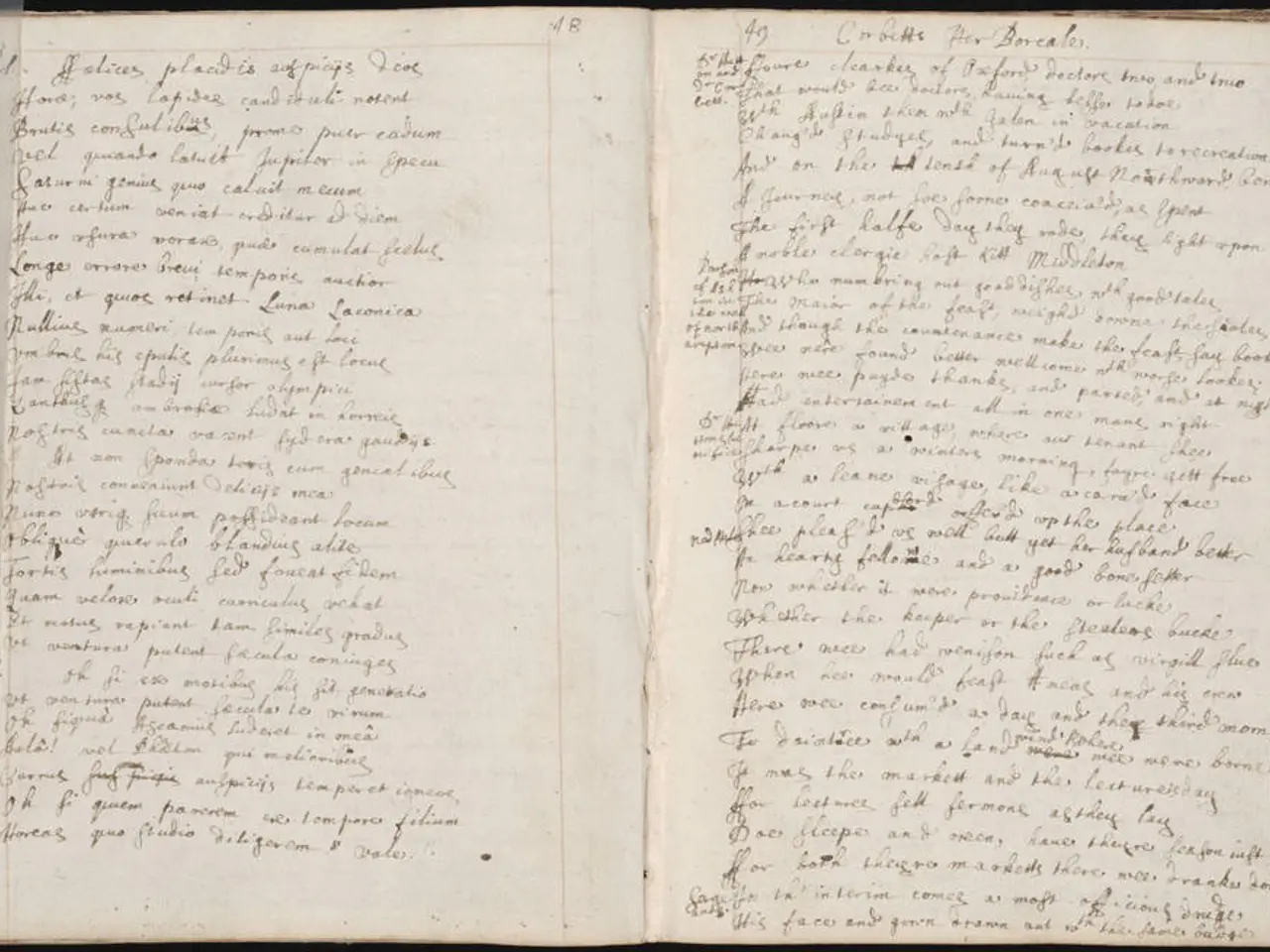Top Picks for Puzzles: Inquiries Designed to Clarify Ideas and Boost Efficiency
### Discovering the Power of Feynman's "12 Favorite Problems" Method
Richard Feynman, a renowned physicist and a key figure in the Manhattan Project, developed an innovative problem-solving technique known as the "12 Favorite Problems." This method, which involved keeping a list of intriguing questions or challenges, was instrumental in Feynman's success in both his scientific endeavours and hobbies [1].
#### Implementing Feynman's Technique in Daily Life
To adopt Feynman's approach, start by identifying 12 central, open-ended questions that pique your curiosity, whether they stem from work, studies, hobbies, or philosophical musings. These questions should be meaningful to your life and challenging enough to stimulate thought, but not so vague that progress seems impossible. Write them down in a place you check regularly, such as a notebook, note app, or as a daily reminder [2].
Next, cultivate the habit of reflection. Review your list at least once a week, but don't feel pressured to solve them immediately. Instead, let them simmer in your subconscious. Carry your problems with you mentally, and when you encounter new information, ask whether any of your 12 problems might connect to this new knowledge. Making random connections as you go about your day can lead to creative breakthroughs [4].
Remember to update your list regularly. Don't be afraid to add, replace, or refine problems as your interests and understanding evolve. Whenever an idea or connection occurs, note it—even partial insights are valuable and may grow over time [3].
#### Leveraging Complementary Techniques
To enhance the effectiveness of the "12 Favorite Problems" method, consider using visualization, mind mapping, or journaling to elaborate on your problems and possible solutions. Combine this technique with the Feynman Technique—explain your problems to others, or to yourself in simple language, to clarify your understanding and uncover hidden gaps [5]. Surround yourself with a variety of sources and experiences to maximize the chance of unexpected connections.
#### Benefits of the "12 Favorite Problems" Method
By adopting this method, you foster continuous learning, creative idea generation, and deeper understanding. Your mind stays engaged with meaningful questions, turning passive learning into active exploration. This habit of persistent inquisition and cross-domain thinking is associated with creative breakthroughs [4]. Over time, revisiting and refining your questions leads to deeper insight, even if solutions remain elusive.
#### Example
For instance, if one of your "favorite problems" is "How does memory change over a lifetime?", as you read about neuroscience, psychology, aging, or even observe friends and family, you might connect new information to this ongoing question, sparking ideas for research, writing, or artistic projects.
#### Key Takeaways
| Action | Implementation Tip | |-----------------------|----------------------------------------------------| | List creation | Choose 12 meaningful, open-ended questions | | Daily engagement | Review and reflect; keep problems mentally present | | Connection making | Look for links to new knowledge and experiences | | Iteration | Update and refine your list periodically | | Logging insights | Record any progress, however minor |
The "12 Favorite Problems" method is less about a structured, step-by-step process and more about fostering a mindset of curiosity, connection, and creative persistence [1]. By making this technique a daily habit, you transform every experience into a potential stepping stone for intellectual growth and innovation.
It's essential to note that the questions do not need to be complex; they can be simpler if preferred. There are additional resources available for learning more about the "12 Favorite Problems" method, including blog posts, decision matrices, tools for learning, books, and educational documentaries. Gian-Carlo Rota, a contemporary mathematician, advised that testing new tricks or results against these 12 problems can help one become a genius [6].
John, an online business owner, uses the "12 Favorite Problems" method to generate ideas for his businesses. His categories for the 12 favorite problems include product ideas, goals to set, titles & hooks, tweets to write, systems to build, newsletter topics, next action steps, tasks to eliminate, tasks to outsource, fun activities to try, random cool ideas, and new business ideas [7]. John commits to recording his ideas for each category every day, keeping the notes within reach and having one page or folder per question or problem. The questions are designed to filter information applicable to current problems and allow for insights and surprising solutions from unexpected perspectives [8].
- Embracing the "12 Favorite Problems" method for personal growth can help stimulate self-improvement in various aspects of one's life. For example, John, an online business owner, uses this technique to generate ideas for his businesses, setting goals related to product ideas, company systems, and creative tasks.
- The "12 Favorite Problems" method is not limited to scientific or academic pursuits but can be applied to self-development and education too. By regularly revisiting and refining these questions, one can foster continuous learning, creativity, and deep understanding, leading to opportunities for personal growth and innovation.
- Incorporating the "12 Favorite Problems" method into daily life can encourage a mindset of curiosity and connection, turning every experience into a stepping stone for intellectual growth. This approach aligns with the broader goal of education-and-self-development, helping individuals grow, learn, and prosper.




